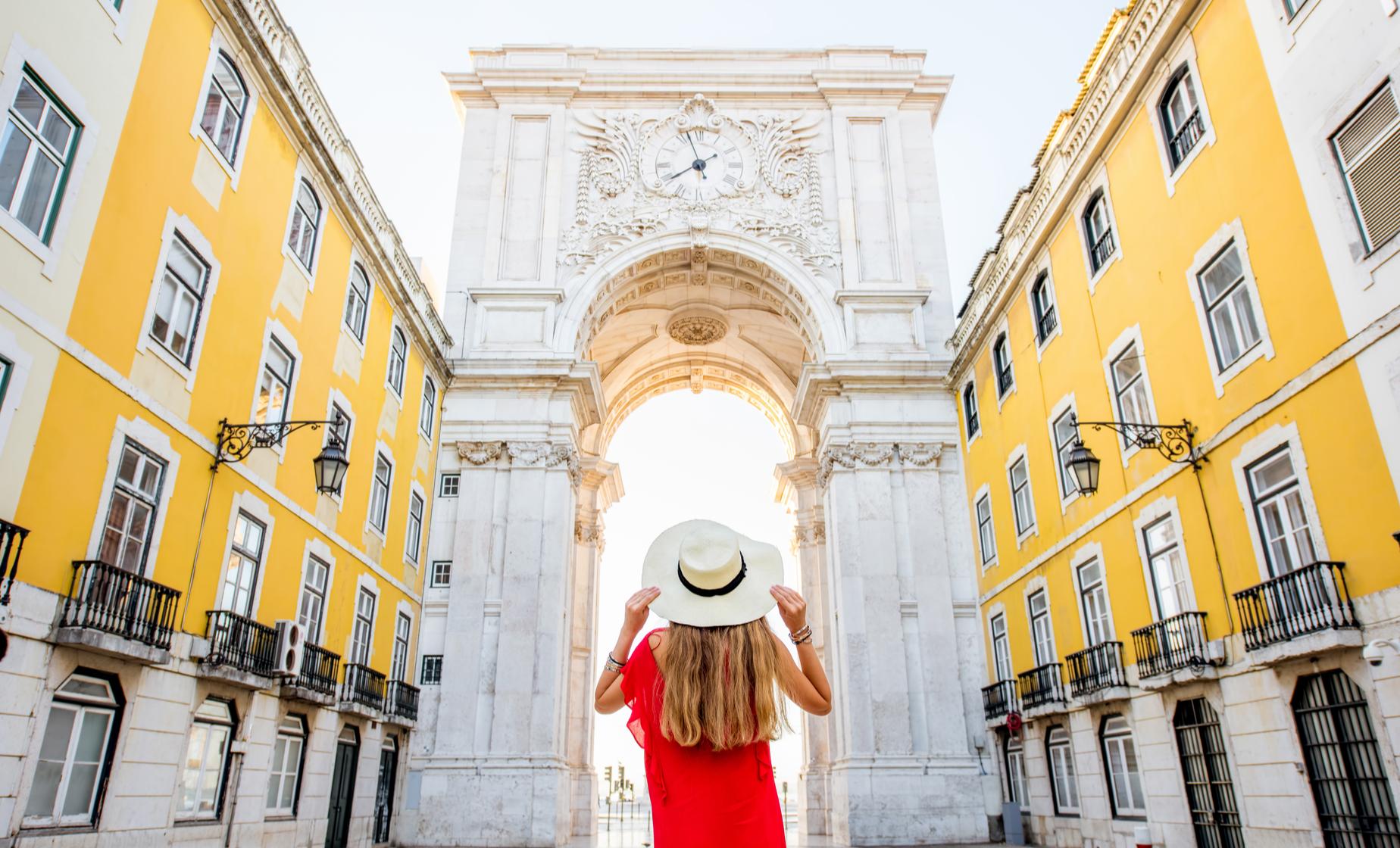Discover Lisbon on Foot

- Immerse in the rich history and culture of Lisbon with a guided, 3-hour walking and culinary tour, tantalizing your taste buds with local cuisine
- Explore iconic sites like Restauradores Square, Rossio train station, and the famous Carnation Revolution landmark at Carmo Square
- Discover architectural wonders that survived the Great Earthquake of 1755 such as Torre de Belem, Castelo de Sao Jorge, and the Monastery of Jeronimos
- Experience a journey back in time wandering the narrow alleyways of Alfama, learning about Fado music, and visiting the Fado Museum
- Indulge in a delicious wine tasting paired with authentic tapas at a traditional wine bar, and enjoy the renowned Pastel de Nata pastry
 Rossio Square, D. Pedro IV statue. A taxi (not included in the tour price) will be required and will take approximately 10 minutes and cost approximately $6 EURO.
Rossio Square, D. Pedro IV statue. A taxi (not included in the tour price) will be required and will take approximately 10 minutes and cost approximately $6 EURO.Discover Lisbon on Foot
This short, but concise 3-hour tour is overflowing with all things Lisbon and will have you experiencing historic sites as well tasting your way through the city. Visit the districts of Baixa, Chiado, and Alfama and discover a unique way to see all the major sites of central Lisbon. Alongside your local and knowledgeable guide, be provided great insight into Lisbon's lifestyle, history, and culture.
Your friendly, English-speaking guide will first take you to the famous Restauradores Square, which is known for its obelisk that commemorates the country's independence from Spanish rule in 1640. View the Rossio train station from Rossios Square and marvel at the intricate Neo-Manueline architecture of this old station, this area is the heart of old and new Lisbon.
The Great Earthquake of 1755 (followed by a tidal wave and fire) destroyed most of the city's larger buildings. Twenty years of frantic reconstruction led to many impressive new palaces and churches as well as the street grid pattern spanning the seven hills of Lisbon. Several buildings from Portugal's golden age survived the earthquake, notably the Torre de Belem, the Castelo de Sao Jorge, and the Monastery of Jeronimos at Belem. Next, learn about the Carnation Revolution of 1974 as you visit Carmo Square, the very place where Portugal's old dictatorial regime fell after 48 years.
Walk through the elegant neighborhood of Chiado, with its old cafes, boutiques, theatres, and bookstores. Stop and snack on a typical Portuguese pastry, the famous Pastel de Nata. The city has a sweet tooth and its most iconic pastry is the palm-size egg tart. A creamy custard tart that seems to be available in pastelarias across the city.
Wander through the old maze of small squares and narrow alleyways of the Moorish neighborhood of Alfama, where time seems to have stopped a thousand years ago. Learn about Fado, Portugal's own musical genre, as you go past the Fado Museum and some of Alfama's hidden, intimate Fado restaurants.
As you will no doubt have begun to work up an appetite, stop next and visit an old wine bar for a delicious wine tasting and an authentic and delectable tapa.
Finish up in the Comercio Square, formerly the entrance hall of the city, one of Europe's largest and most beautiful squares. At the waterfront end of the Baixa, the Praca do Comercio is now pedestrianized and buzzing with some of Lisbon's best restaurants and cafes.
Our Port Books are exclusive guides that provide detailed information curated by our tour directors and local representatives, including:
- Port History
- Maps
- Shopping Recommendations
- Weather
- Highlights, Attractions, and Points of Interests
- Recommended Clothing
- Restaurants, Food & Beverage
- Important Tourist Information - Local Currency, Safety, Transportation, and more!

 4.7 / 5
4.7 / 5